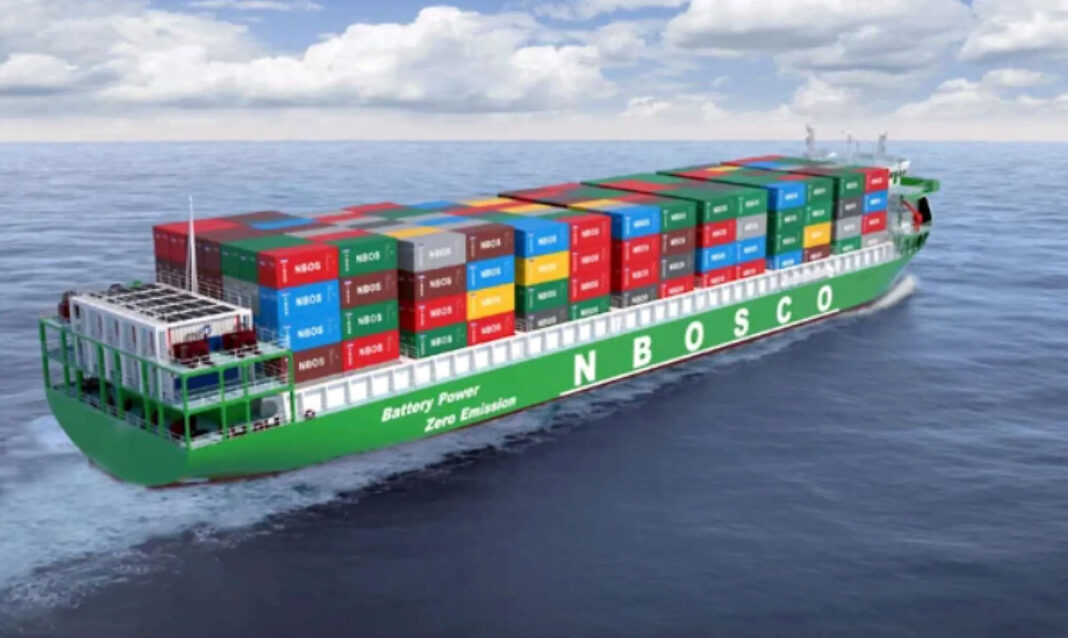China has commissioned a pair of all-electric container ships, marking a bold step toward cleaner maritime transport.
These ships are touted as the largest of their kind globally and promise to start a trend that may revamp a problematic sector of global transportation.
The International Maritime Organization (IMO) set out in 2018 to halve shipping emissions by 2050. However, Climate Action Tracker reports that halving emissions is insufficient to prevent global warming from exceeding the 1.5 degrees Celsius limit set by the Paris Agreement.
The shipping industry must generate net zero emissions by 2050 to meet this target, and it’s not on course for that.
The shipping industry currently emits one billion tons of carbon dioxide, accounting for almost three per cent of global greenhouse gas emissions.
That’s a challenging amount of carbon to offset, especially since cargo shipping occupies such a central role in our lives.
Just look at how much trouble we’ve had because of the supply chain crisis — as a consequence of the pandemic and the ongoing Russian invasion of Ukraine — which has led to severe goods shortages and economic downturns.
In 2023 shipbuilder Concordia Damen finished building Antonie, a 443ft cargo vessel capable of carrying 3,700 tons, entirely powered by hydrogen. In 2021 Norway unveiled the world’s first all-electric container ship, Yara, which can hold 120 standard 20-foot TEUs of fertilizer at a time, powered by batteries equivalent to 100 Tesla cars.
The two new all-electric cargo ships being built by Jiangxi Jiangxin Shipbuilding Co for China’s COSCO Shipping Corporation Limited are expected to be much larger and more powerful.
These ships will be powered by ten box batteries delivering 19,000 kilowatt-hours (kWh) of energy, with a dedicated battery area away from the crew for safety. Although the company did not disclose the batteries’ range, they can be swapped or recharged at port. The energy capacity is equivalent to 352 Tesla Model 3 Standard Range PLUS vehicles (54kWh per car).
The vessels feature seven cargo holds with a capacity of 740 TEUs, more than six times than the Yara, along with several comfort features for the crew. The vessel’s bow design reduces wind resistance, noise, and vibration. A dual-engine, dual-prop propulsion system enhances manoeuvrability.


